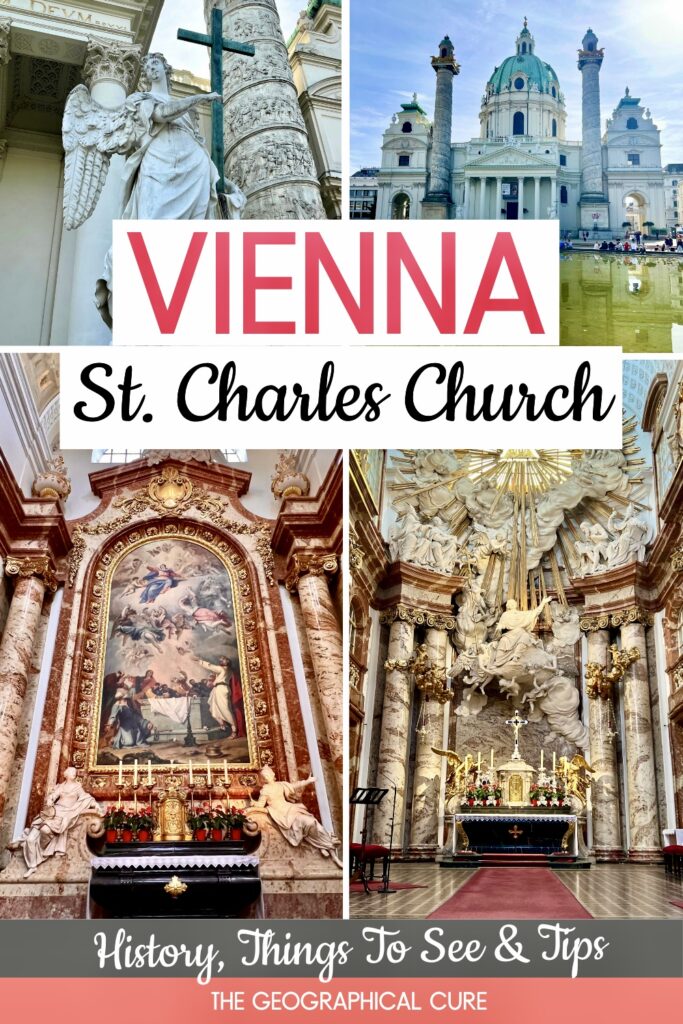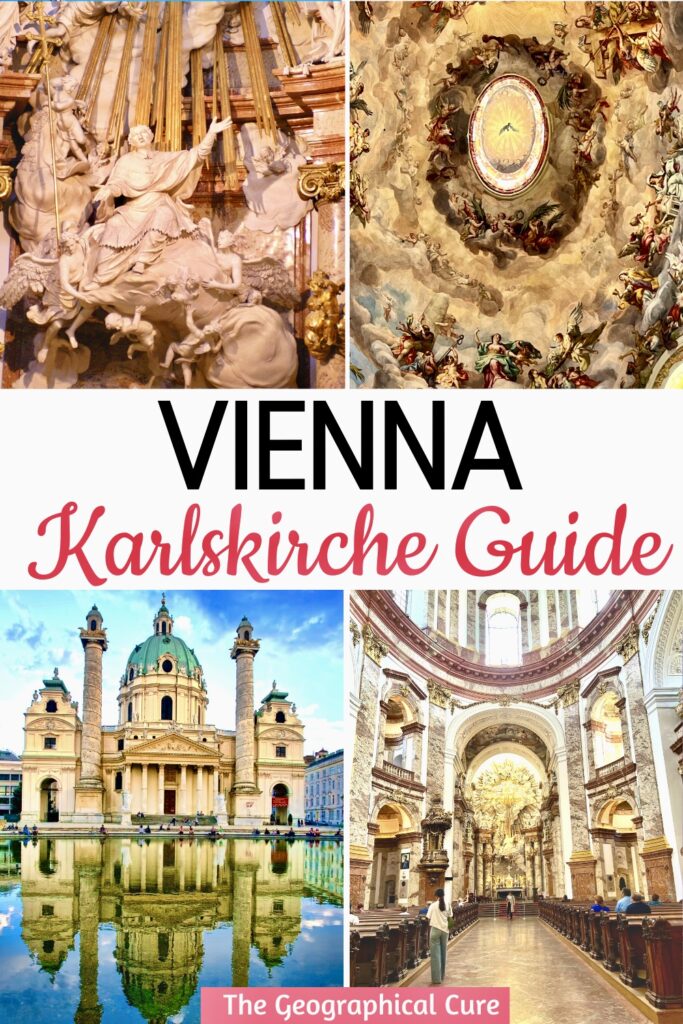Karlskirche is Vienna’s most spectacular Baroque church, celebrated for its unique architectural style.
Designed by Johann Bernhard Fischer von Erlach, the mastermind behind Schönbrunn Palace, it represents a fusion of grandeur and artistic innovation. This church was the architect’s final major work.
The church is dedicated to Saint Carlo Borromeo. But it also honors Emperor Karl IV, blending religious reverence with imperial tribute.
This combination of architectural beauty and historical depth makes Karlskirche a must-visit landmark in Vienna.
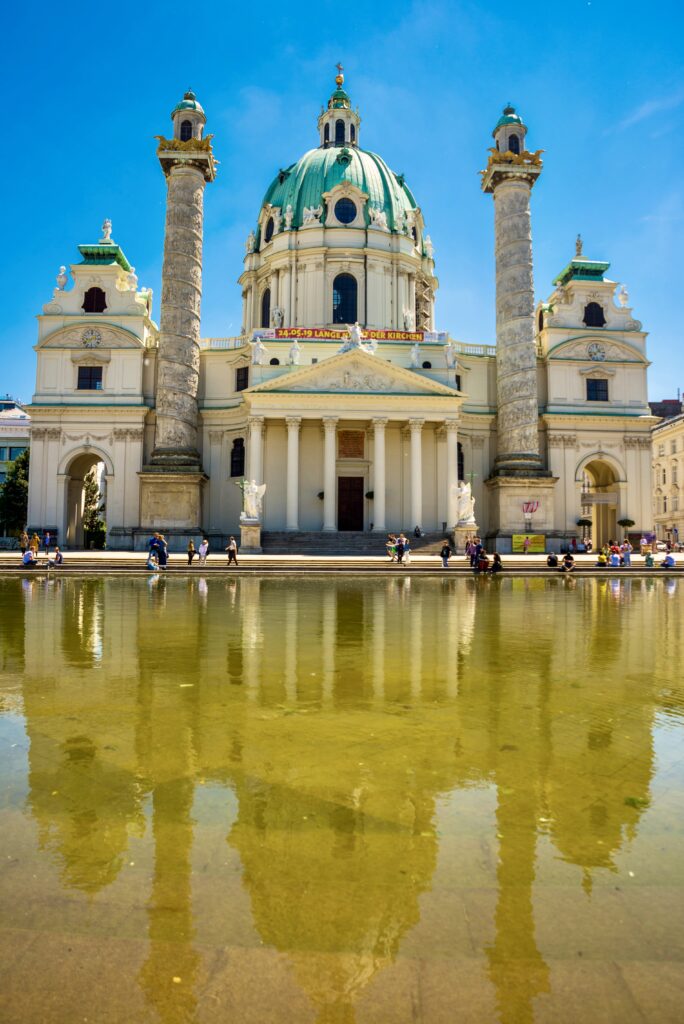
In this guide to St. Charles Church, I’ll tell you everything to see and give you tips for visiting.
Here’s a quick snapshot of what to see in this grand church:
- facade
- high altar
- dome frescos
- altar paintings
- organ
- church model
- treasury
- panoramic terrace
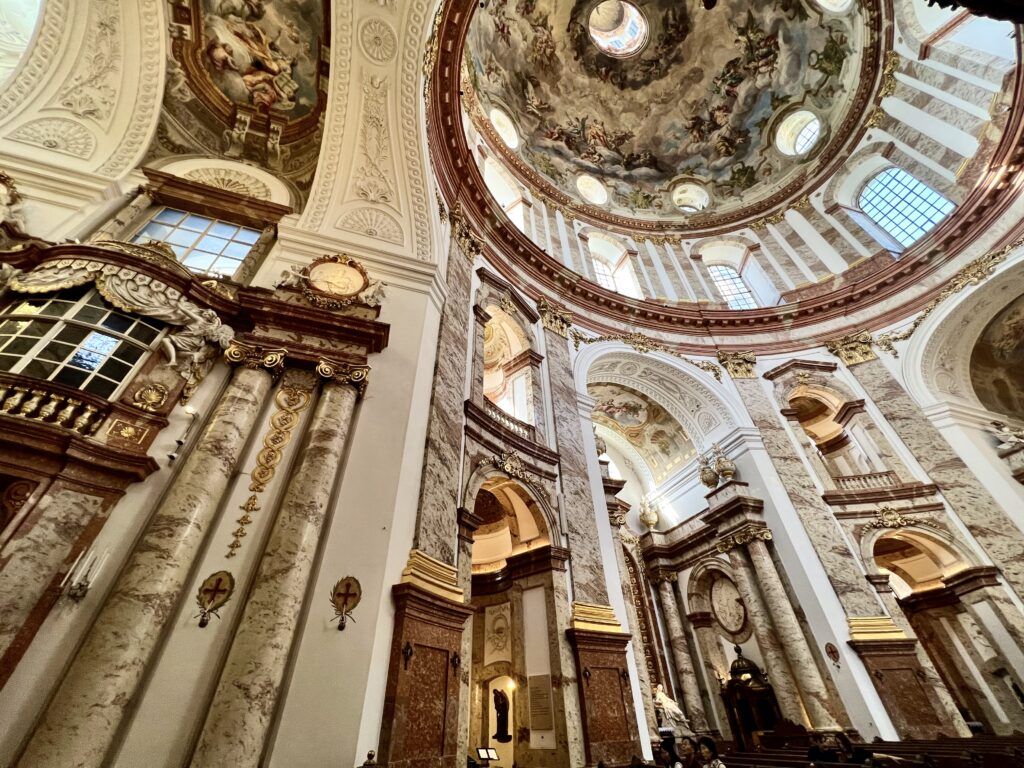
Mini History of Karlskirche
Between 1713-14, Vienna was devastated by a plague that claimed over 8,000 lives.
In response, Emperor Charles VI pledged to construct a church in honor of St. Charles Borromeo. He was known as the “plague saint” for his compassionate care during the crisis.
Following the epidemic, the emperor tasked Johann Bernhard Fischer von Erlach with the church’s design, a project later completed by his son.
Today, Karlskirche is maintained by the Knights of the Cross with the Red Star, who have played a key role in its preservation.
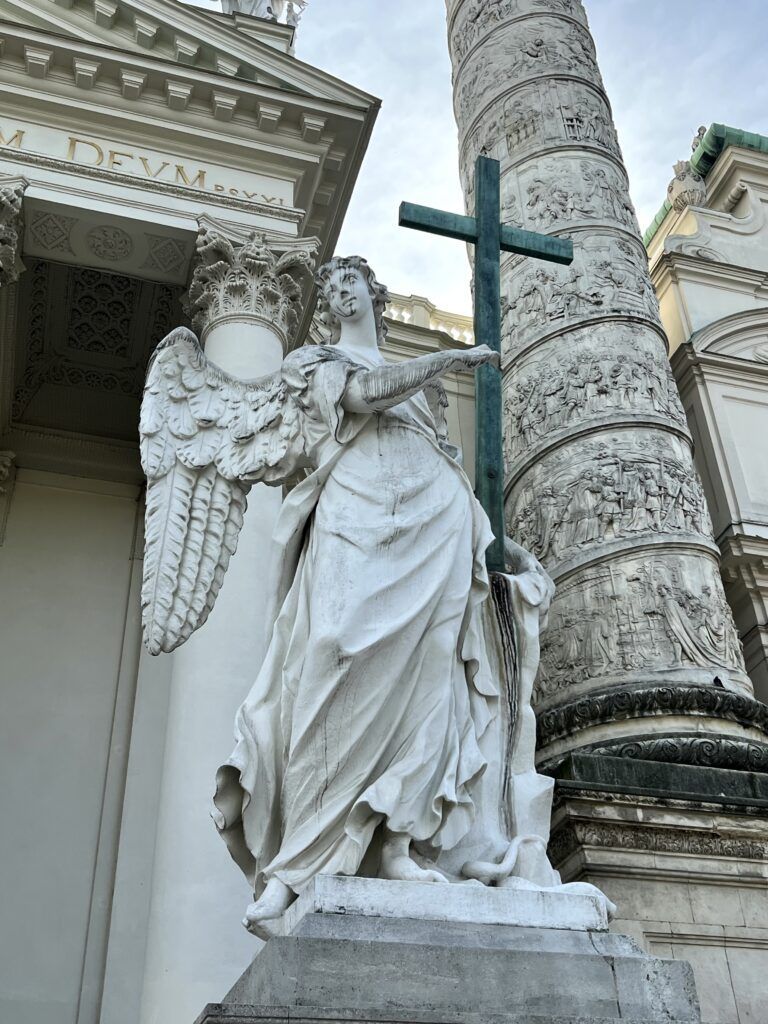
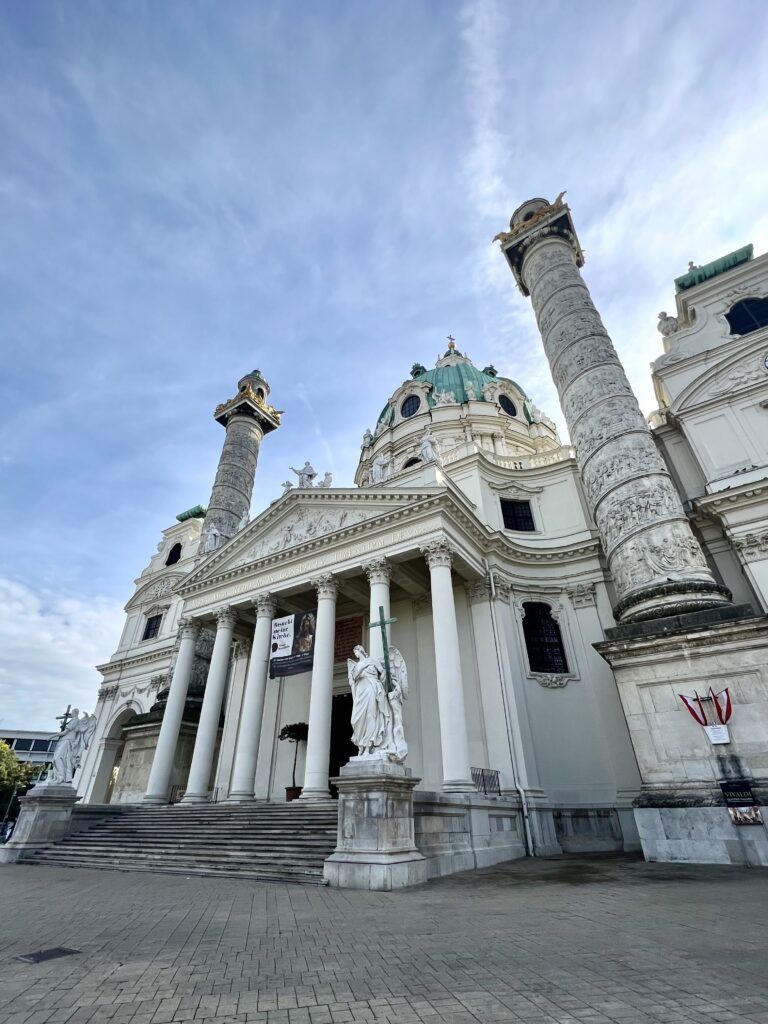
Guide To Karlskirche: What To See
Facade
Karlskirsche’s facade combines all the usual Baroque elements of design, but pairs it without classical elements.
A massive Greek style portico, similar to the Pantheon in Rome, is flanked by a dizzying pair of twin columns.
They were modeled after Trajan’s Column in Rome. Atop the triangular pediment is a statue of Saint Borromeo.
The columns reference both Solomon’s Temple and the Pillars of Hercules, symbolizing consistency and courage, the emperor’s motto. They’re topped by eagles, the symbol of the Hapsburg emperor.
Italian sculptor Lorenzo Mattielli carved the columns. Though they appear marble, they are actually painted stucco. Aside from the imperial allusions, they are decorated with reliefs portraying the good deeds of St. Borromeo.
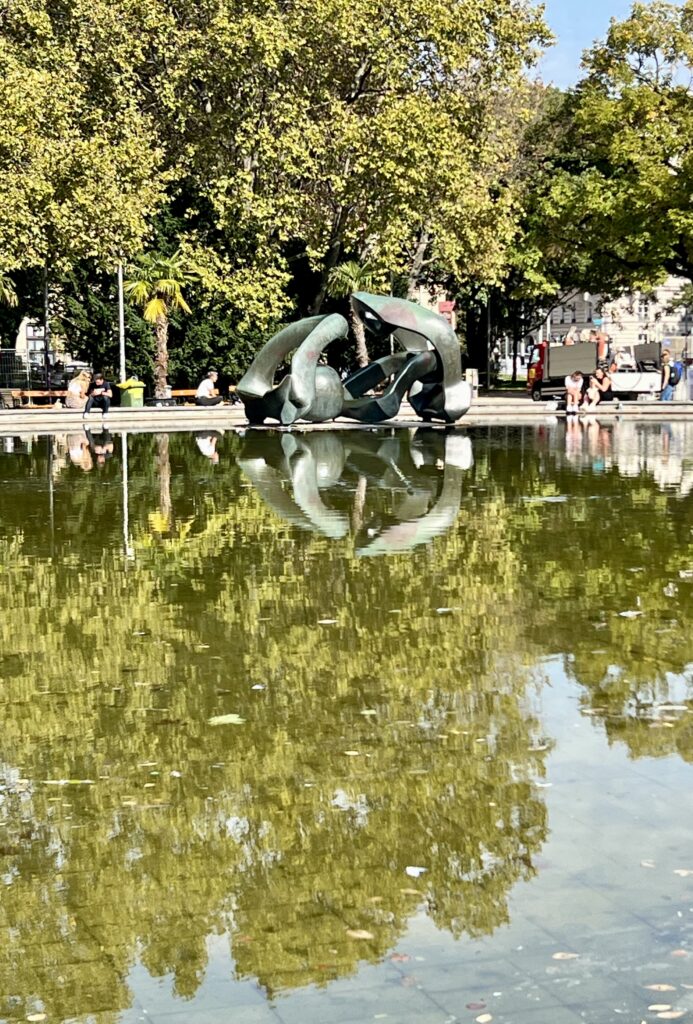
Flanking both sides of Karlskirche are curved wings leading to three-story pavilions. Each is set upon an arch reminiscent of Roman triumphal arches.
The church’s green dome seems immense at first glance. But it’s an architectural illusion, with the dome perched right behind the pediment.
This perspective trick makes the dome, which is actually 235 feet high, appear larger.
In front of the church, a large circular pool offers a fantastic photo opportunity. The reflection of the church’s architecture in the water creates a stunning visual effect. You can also sit down on a bench, relax, and admire the church.
Interior
The curved interior is a tiny jewel box. It’s smaller than you might expect when you see the deliberately wide facade.
The interior is renowned for its elaborate and artistic decoration. It features a stunning combination of Baroque and Rococo styles.
There is marble, stonework, stucco reliefs, and flying angels. Even the walls are lined with marble.
It’s a mini symphony of pink, cream, teal, and gold. My video does not do it justice!
In the corners of the nave, the marble is sloped. On the cornices, the horizontal decorative molding at the top, you can see a variety of spiral forms and triangles. These optical tricks make the church seem even bigger.
The nave of Karlskirche impresses with its classical design, featuring large, flat marble pilasters.
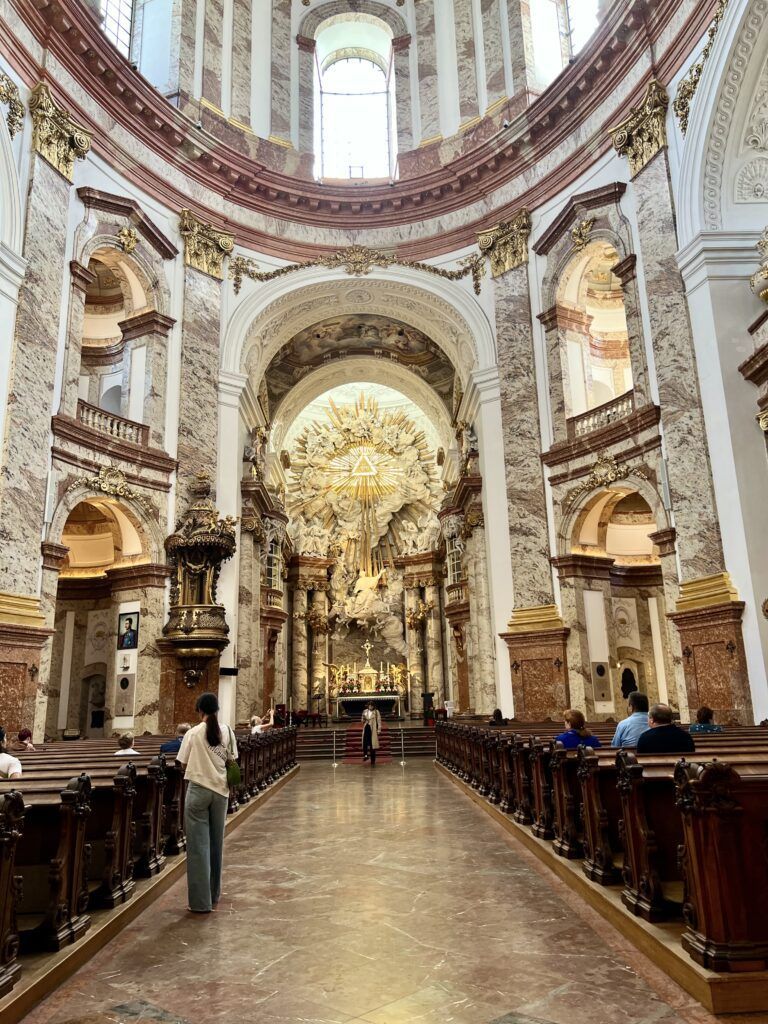
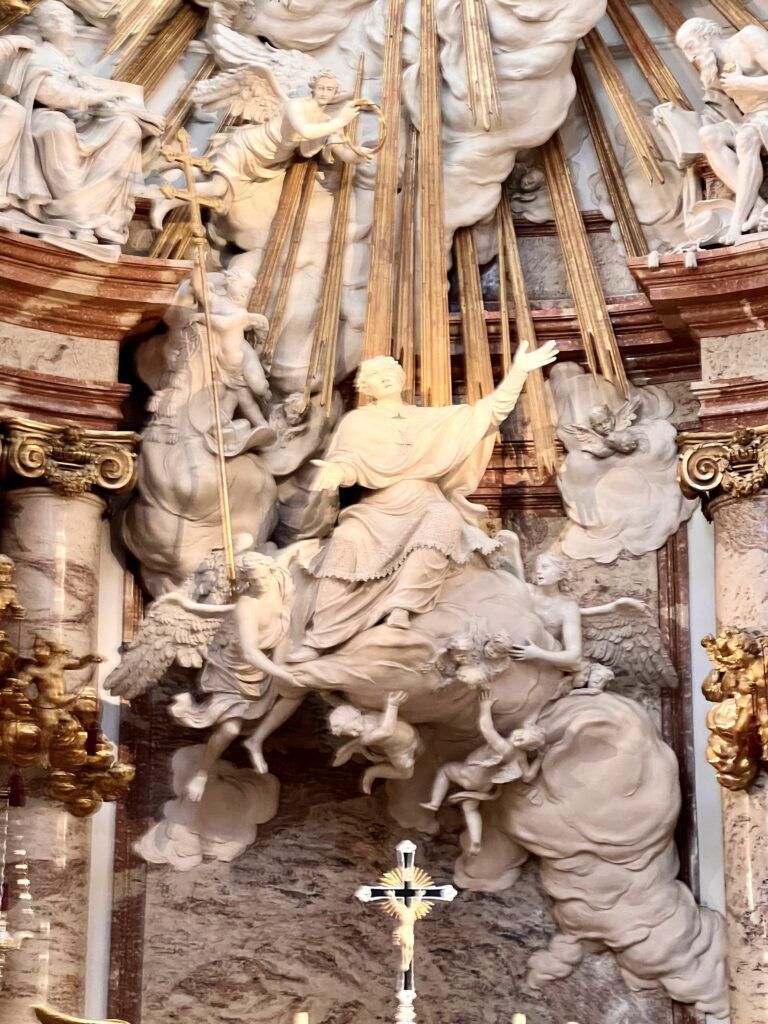
Johann Michael Rottmayr painted the illusionistic ceiling fresco in the dome.
It depicts scenes from St. Borromeo’s life. He’s easily identified by his cardinal’s hat and cross, and surrounded by the virtues of faith, hope, and love.
On the two opposite sides of the dome are paintings by Sebastiano Ricci and Daniel Gran.
The presbytery, the area around the altar, has both 3/4 detached columns and full columns. There are high reliefs of the four Evangelists. And the church fathers are enthroned on the full columns.
The high altar is intricately designed and flanked by impressive columns. In the center is a stucco sculpture by Ferdinand Maxmilian Brokoff, depicting the ascension of Saint Borromeo.
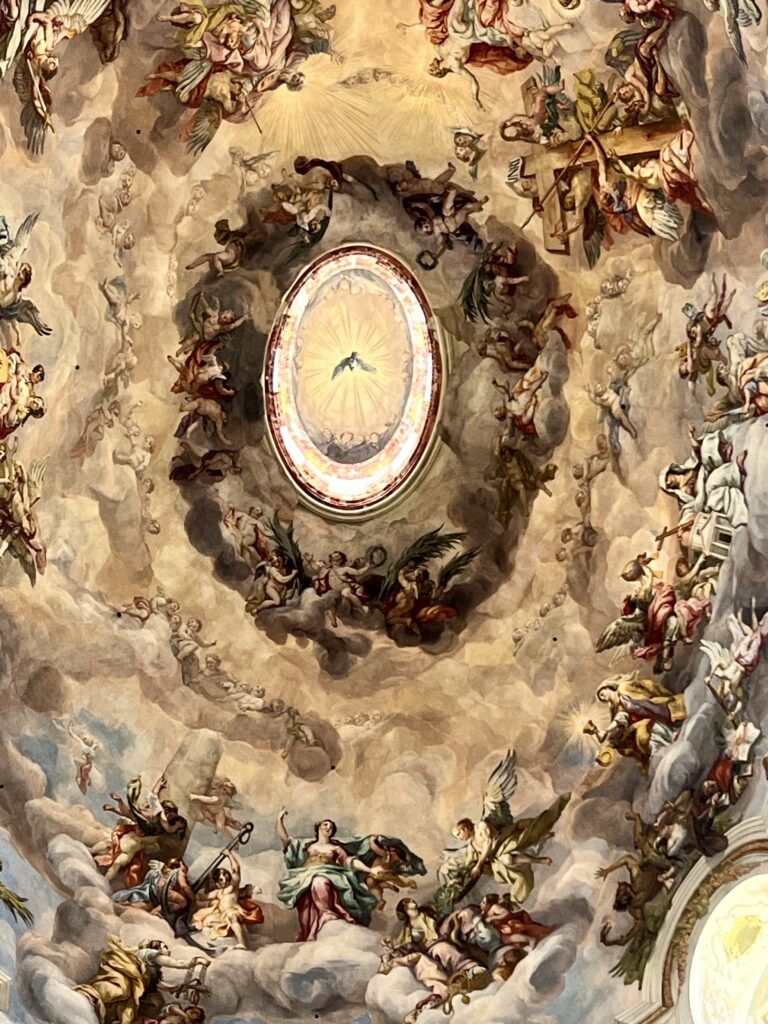
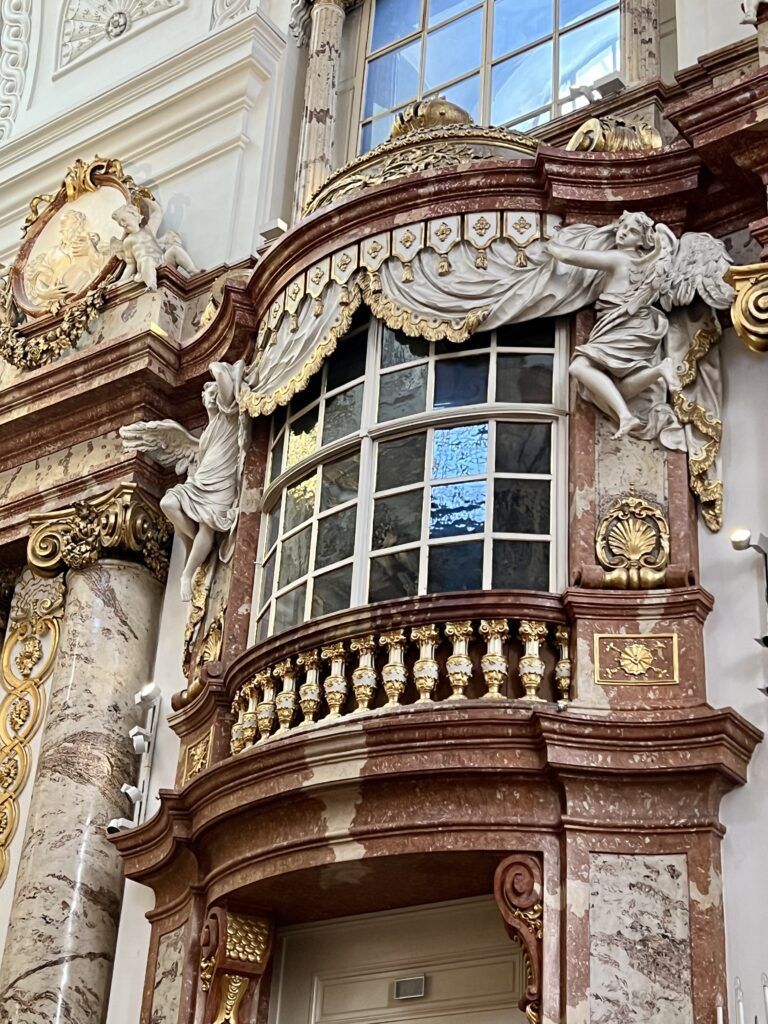
Above the sculpture group, a circle of angels and sun rays is arrayed in front of a source of light. It’s similar to Bernini’s Chair of St. Peter in St. Peter’s Basilica in Vatican City.
The altar is framed with what look like opera boxes with curtains on both sides. In the Baroque era, theatrical touches like this were intended to stir the emotions and evoke a sense of awe in the spectator.
This altar is complemented by paintings in the side chapels created by artists Daniel Gran, Sebastiano Ricci, Martino Altomonte, and Jakob van Schuppen.
A standout feature in this array of artworks is a wooden statue of St. Anthony by Josef Josephu.
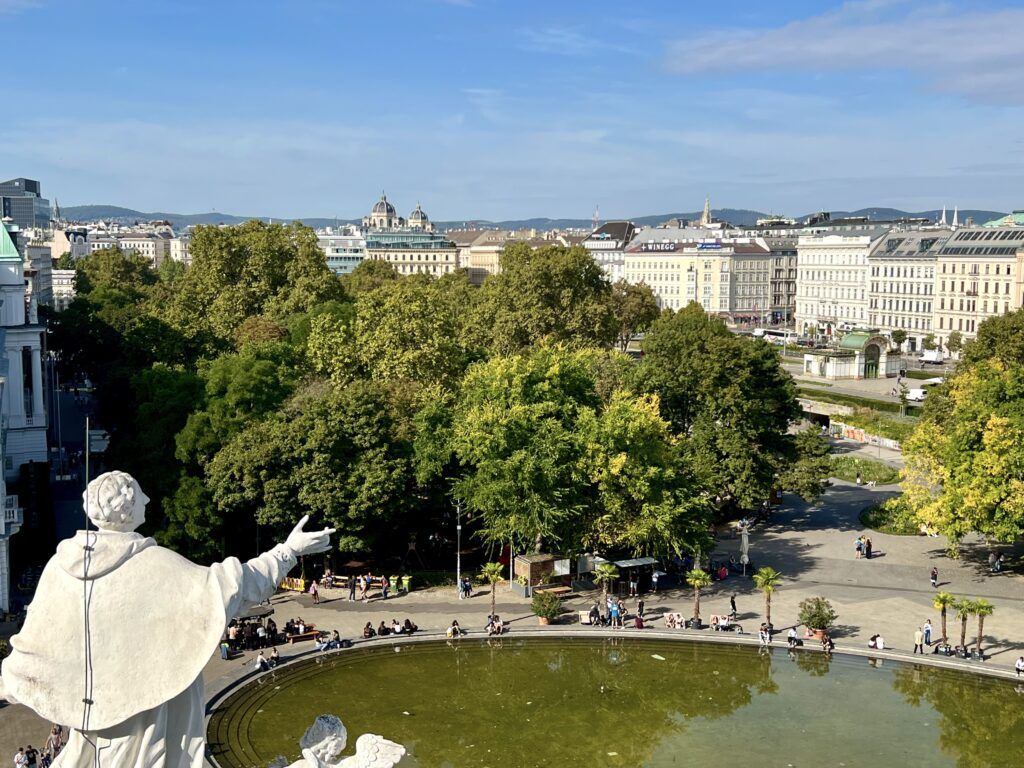
Panoramic Terrace & Exhibits
Inside the church, you have the option to ascend a spiral stone staircase. It’s wide and equipped with handrails, making it an easy climb. Alternatively, there’s a lift that can take you part way up.
As you make your way up, you’ll come across several intriguing sights: a cutaway model of the church, its historic organ, and a small treasury.
The journey also rewards you with fantastic views of the church’s interior, including the impressive dome fresco. Look out for the unusual image of Mary breastfeeding the Christ child and one of Martin Luther being banished from heaven.
The organ itself is steeped in history, with its core dating back to 1739 and additional wings added in 1847.
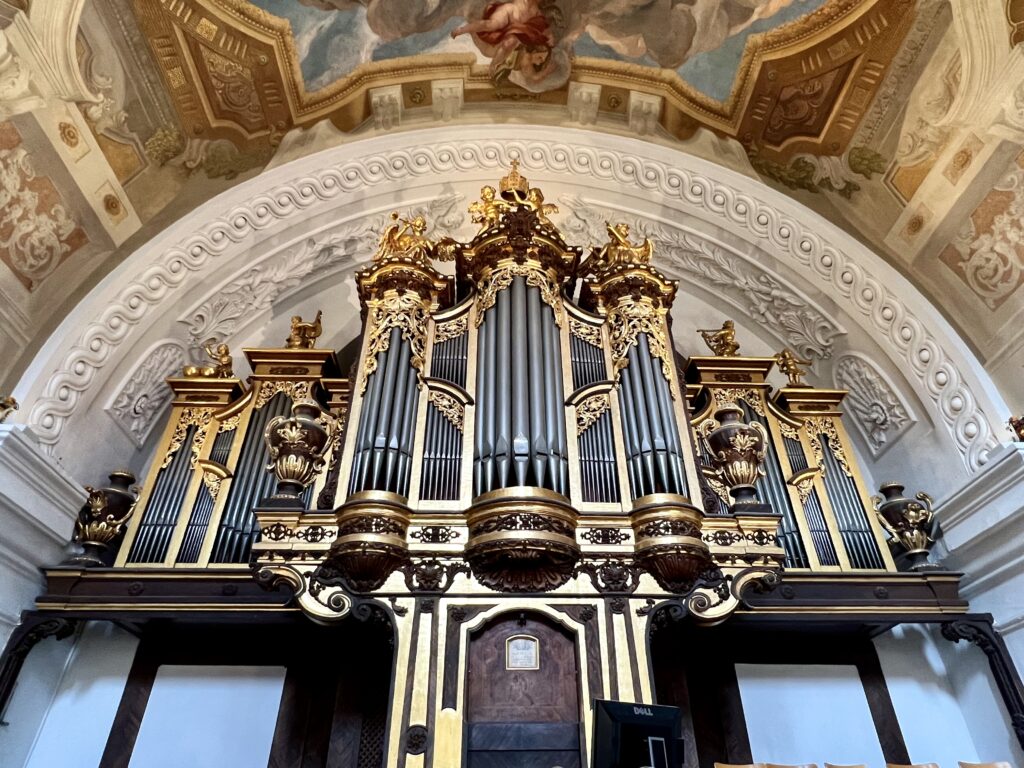
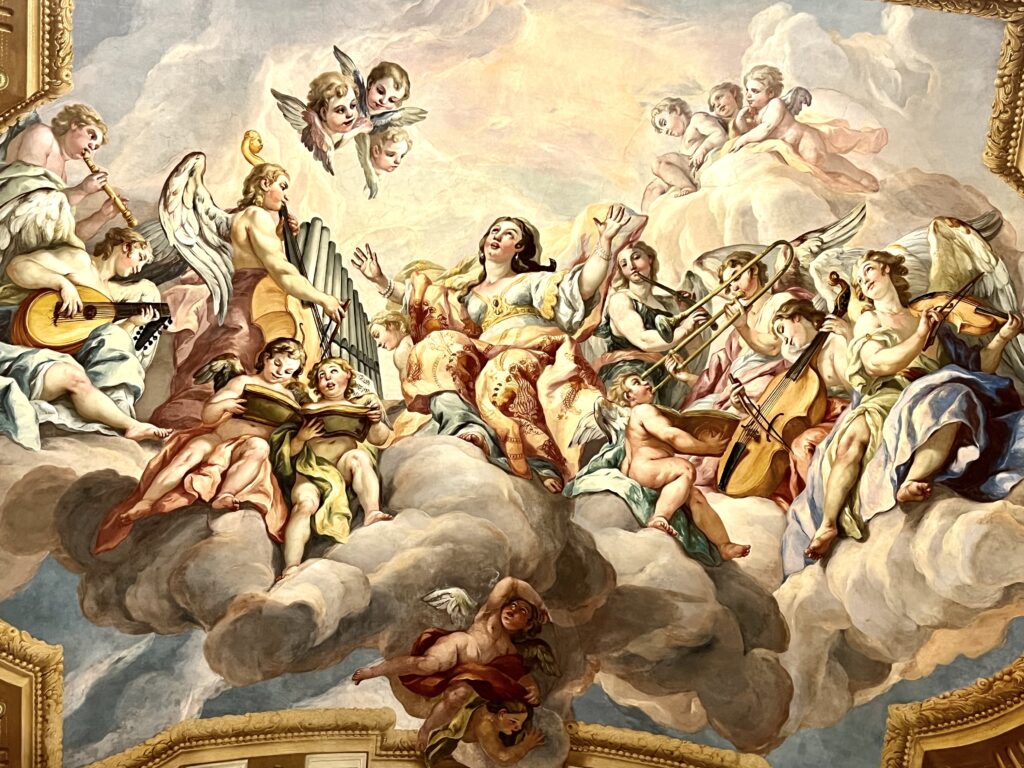
The treasury includes a small but fascinating collection of historical and religious items and relics. Among these treasures is a silk mitre with gold lame, believed to have belonged to Charles Borromeo himself.
The collection also features a 15th century choir cape and 18th century reliquaries, one of which is said to contain wood particles from the cross.
At the top, there’s a small terrace set above the portico. You have panoramic views over the rooftops of Vienna and can take a close up look at the columns.
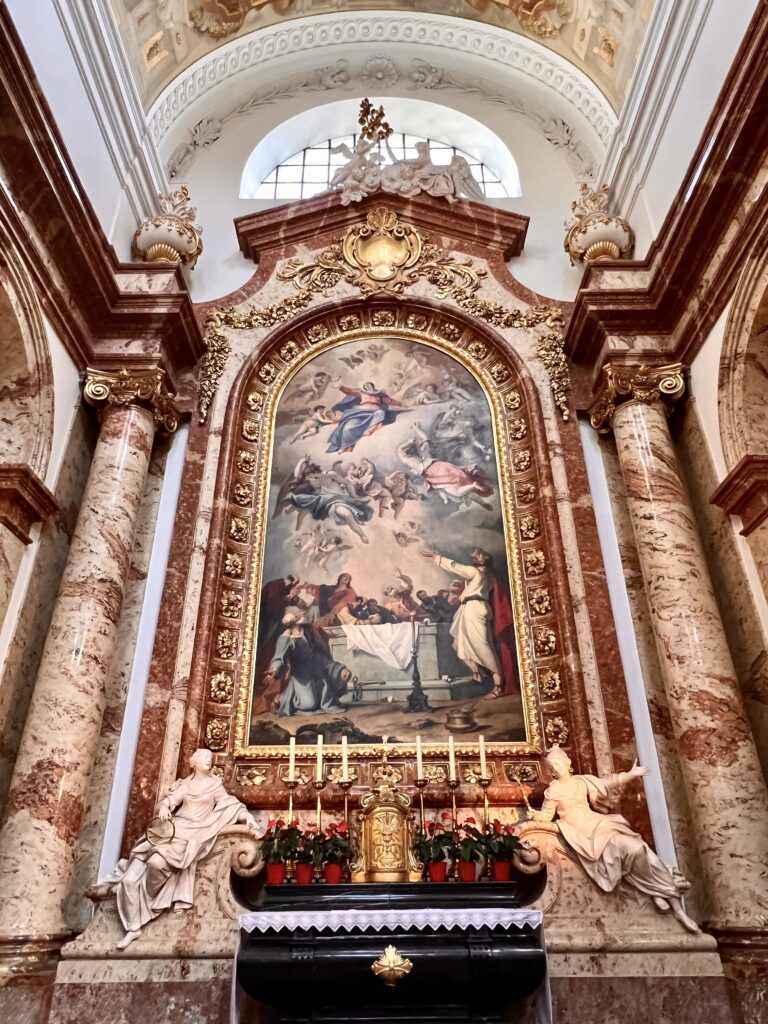
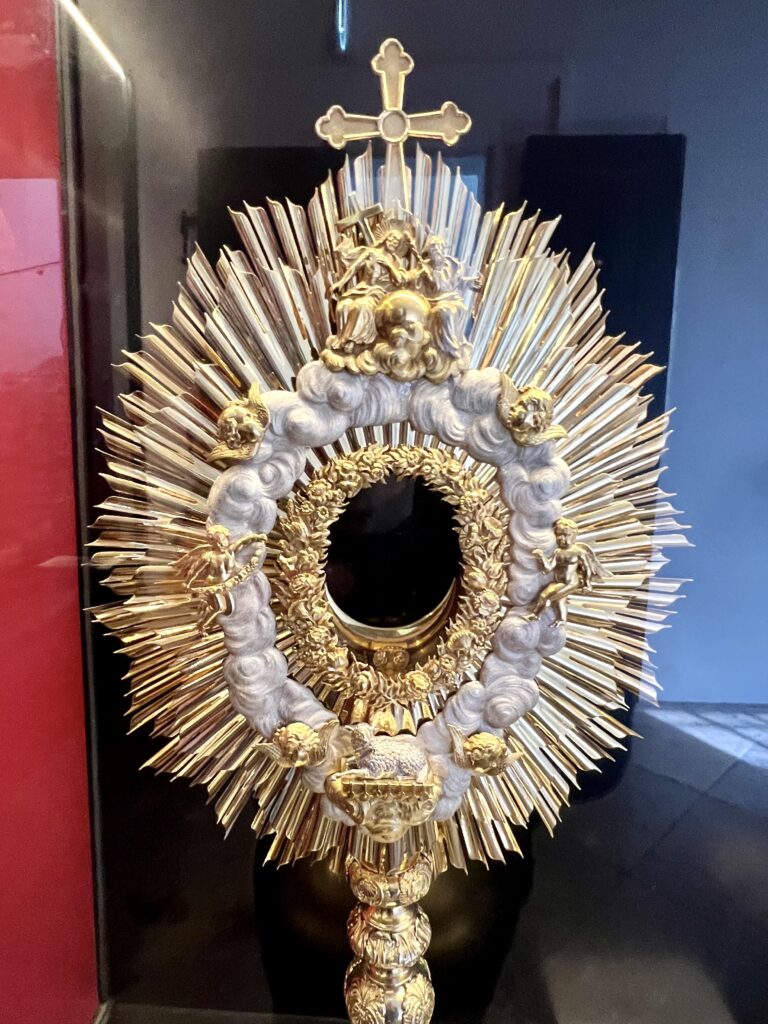
Practical Guide & Tips For Karlskirsch
Address: Karlsplatz 10. The entrance is to the right as you face the church.
Subway: Karlsplatz, where the U1, U2, and U4 lines connect.
Hours: Open Monday through Saturday from 9:00 am to 6:00 pm. On Sunday and holidays it’s open from 11:00 am to 7:00 pm.
Tickets: 9.50 euros. You must have cash to buy a ticket! The church is not included in the Vienna Pass.
Concerts: The church regularly hosts concerts. Click here to book a ticket for Vivaldi’s Four Seasons.
Pro Tip: The Christmas Market in front of the church in November and December is one of the best in Vienna.
Is Karlskirche Worth Visiting?
Yes, despite the rather hefty entrance fee. This is one of Vienna’s most prominent monuments. The interior is a beautiful Baroque jewel and the panoramic terrace is great for views.
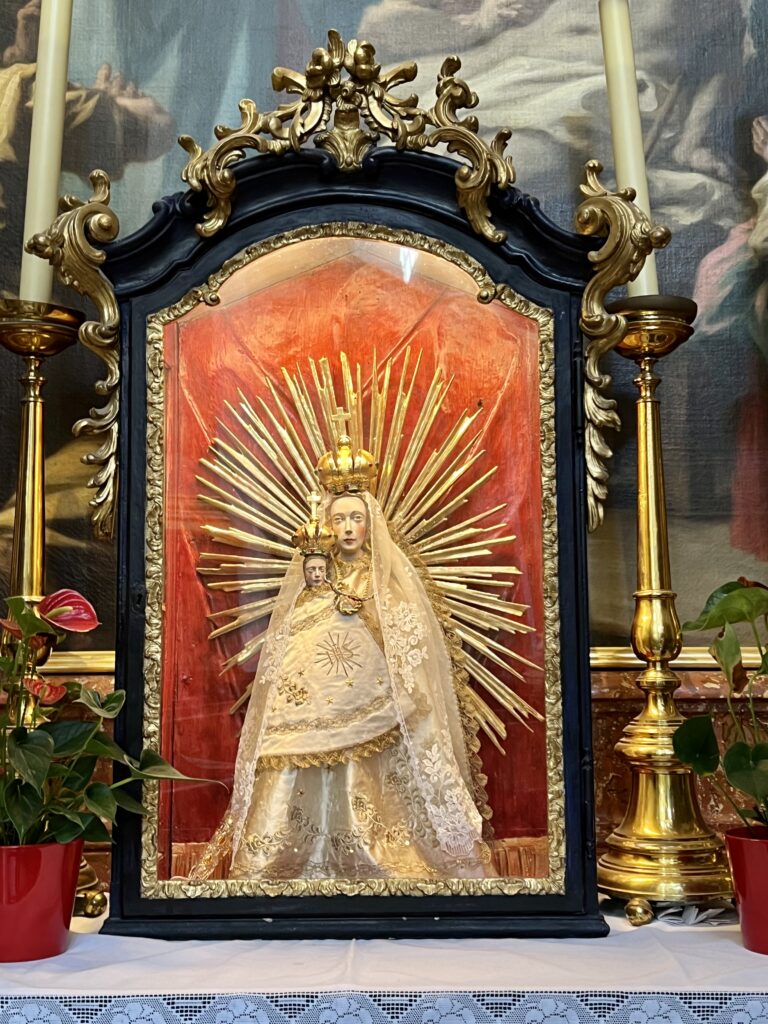
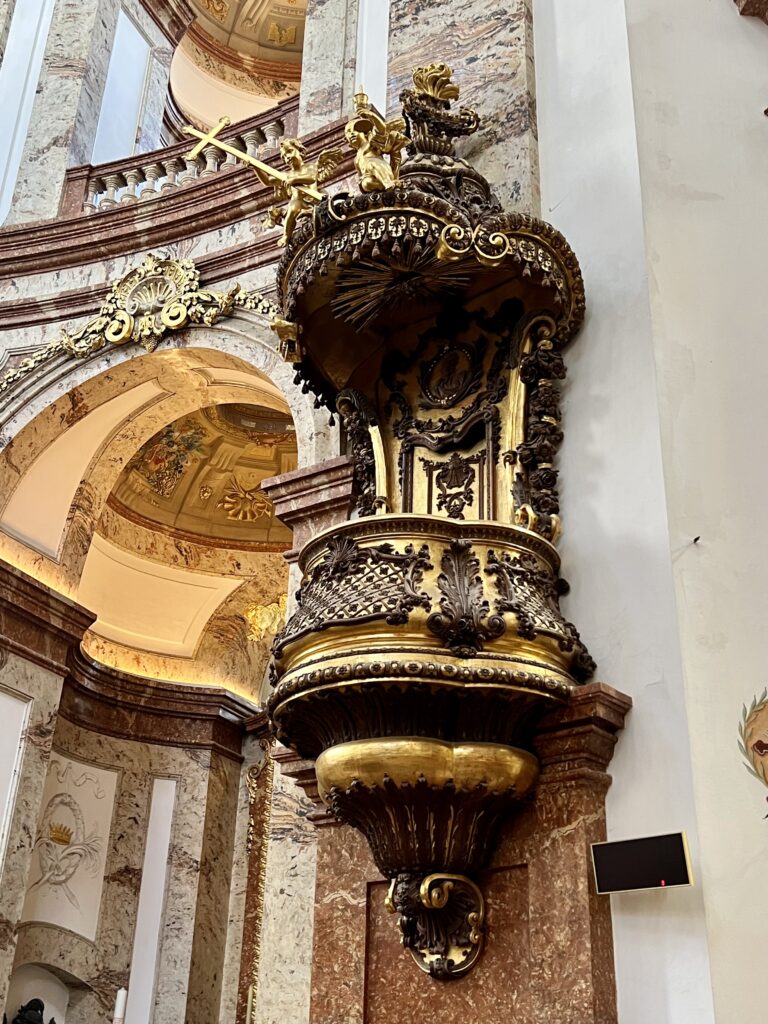
Attractions Near Karlskirsche:
While you’re in the neighborhood, there are some other attractions you can check out: Otto Wagner’s Pavilions, the Secession Museum, and the newly re-opened Wein Museum.
I hope you’ve enjoyed my guide to St. Charles Church. You may find these other Vienna travel guides useful:
- 3 Days in Vienna Itinerary
- Best Museums in Vienna
- Guide To St. Stephen’s Cathedral
- Guide To the Hofburg Palace
- Guide To the Kunsthistoriches
- Guide To the House of Music
- Beethoven Guide To Vienna
- Klimt Guide To Vienna
- Guide To the Belvedere Palace
- Things To Do in Vienna in Winter
Pin it for later.

